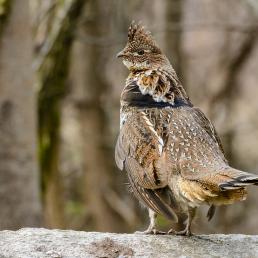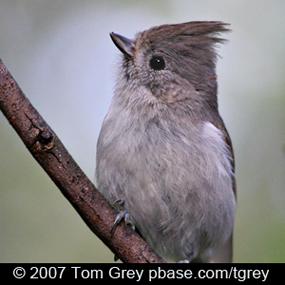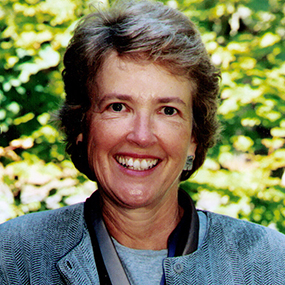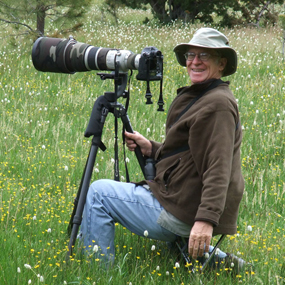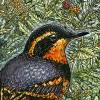

Join BirdNote tomorrow, November 30th!
Illustrator David Sibley and actor H. Jon Benjamin will face off in the bird illustration battle of the century during BirdNote's Year-end Celebration and Auction!
A California landscape - rolling hills dotted with oak trees. One year-round resident is the Oak Titmouse. In 1985, a pathogen called Sudden Oak Death began attacking California oaks. As the oaks die, they're cut down in an effort to stop the spread of the pathogen. But Oak Titmice require standing dead trees in which to nest and live trees in which to feed. Learn more about the conservation plan of California Partners in Flight. And learn how you can help, at Audubon.org.
BirdNote®
What Sudden Oak Death Means for Birds
By Bob Sundstrom and Chris Peterson
This is BirdNote!
[Song and calls of Oak Titmouse]
The quintessential California landscape: rolling hills dotted with oak trees. More than 300 species of birds, mammals, reptiles, and amphibians depend on these oak woodlands at some stage in their lives.1 [Call of Mourning Dove] The nutritional treasure here is the acorn – a high quality and often abundant food.2
One year-round resident is the Oak Titmouse. [Chatter of Oak Titmouse] Six inches long, all gray, and with a short crest, this bird is close kin to our backyard chickadee – and just as animated and fun to watch. [Oak Titmouse calls] Its future, though, is uncertain.
In 1985, a pathogen, akin to the one that caused the Irish potato famine, began attacking California oaks. The disease is called Sudden Oak Death, and by 1999, it had become a full-scale epidemic.
[Oak Titmouse song]
As the oaks die, they’re cut down in an effort to stop the spread of the pathogen. But Oak Titmice require standing dead trees in which to nest and live trees in which to feed.
[Oak Titmouse chatter or song]
A group called California Partners in Flight is working to help the Oak Titmouse – and other birds – weather the storm, until Sudden Oak Death is brought under control. To review their outstanding conservation plan, begin at our website, birdnote.org.
For BirdNote, I’m Mary McCann.
###
Sounds of the Oak Titmouse provided by The Macaulay Library of Natural Sounds at the Cornell Lab of Ornithology, Ithaca, New York. Songs, calls and chatter (from 44889 and 56884) recorded by G.A. Keller; Mourning Dove 22930 recorded by R.W. Fish.
Ambient recorded by C. Peterson T75
Producer: John Kessler
Executive Producer: Chris Peterson
© 2011 Tune In to Nature.org October 2011 Narrator: Mary McCann
ID# SotB-OATI-01-2011-10-25
Oak Woodland Bird Conservation Plan by California Partners in Flight, page 8
1 Verner 1980; Barrett 1980; Block and Morrison 1998).
2 Koenig 1990; Ostfeld et al. 1996; McShea and Schwede 1993, and McShea 2000).
